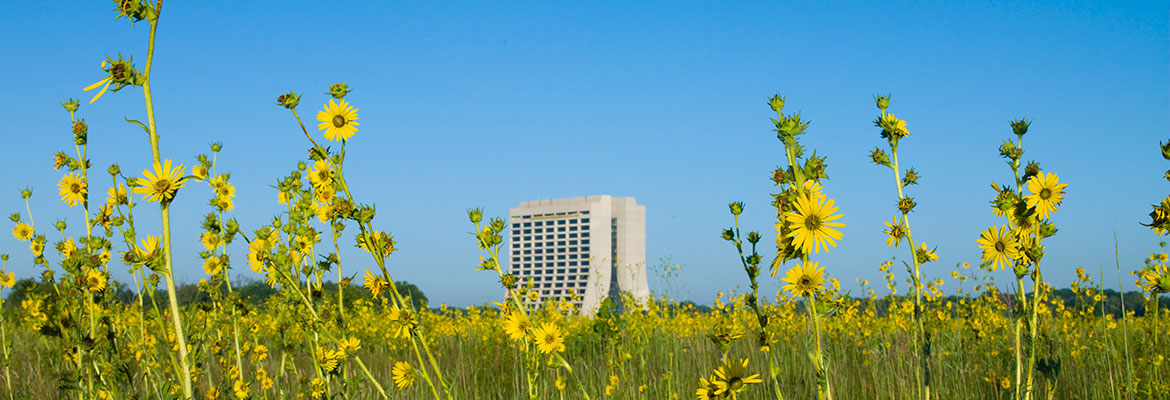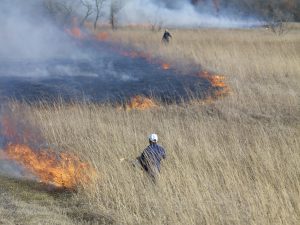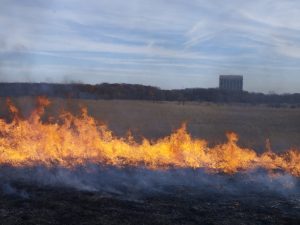Burning is essential for maintaining tallgrass prairie, oak savanna, and many other habitat community types in the Midwest.
Fire has been an important process occurring in many ecosystems around the world for millennia. Contrary to popular belief, most fires in the Midwest were not caused by lightning. Indigenous peoples used fire as a management tool for centuries, helping to create the millions of acres of former tallgrass prairie found in Illinois in the early 1800’s. Some of their reasons were to attract game to freshly sprouted plants (as black, burned areas absorbed more sunlight and therefore warmed faster), to clear underbrush in woodlands, or even to create open vistas surrounding their camps or villages that helped prevent raids from neighbors. Today, we use fire as an economically- and environmentally-sound tool for good land stewardship.
Grassland ecosystems, such as tallgrass prairie, depend on fire to keep them free of trees and shrubs. Fire is also excellent at controlling invasive plants such as garlic mustard, ornamental bittersweet and young sprouts of honeysuckle and buckthorn. Left unchecked, invasive species crowd out native species and significantly reduce biodiversity. Newly restored woodland and prairie areas often require fire for several years in a row for this reason. Burning also removes accumulated biomass and recycles fertile nutrients such as potassium back to the soil. Recent scientific research has shown that seeds from certain plants will not germinate without being exposed to heat, smoke, or boiling water thus highlighting the evolutionary relationship between healthy ecosystems and this ancient process.
Land management units are evaluated for burning each year and prioritized to conduct the most needed burns first. Prescribed burns are managed by Fermilab Roads and Grounds personnel, who follow strict procedures. All burn personnel receive recognized training and certification.



